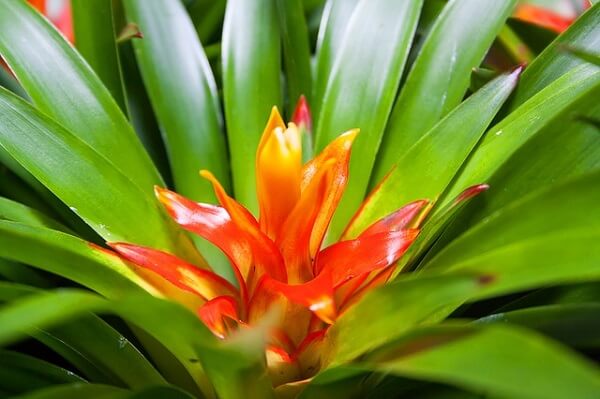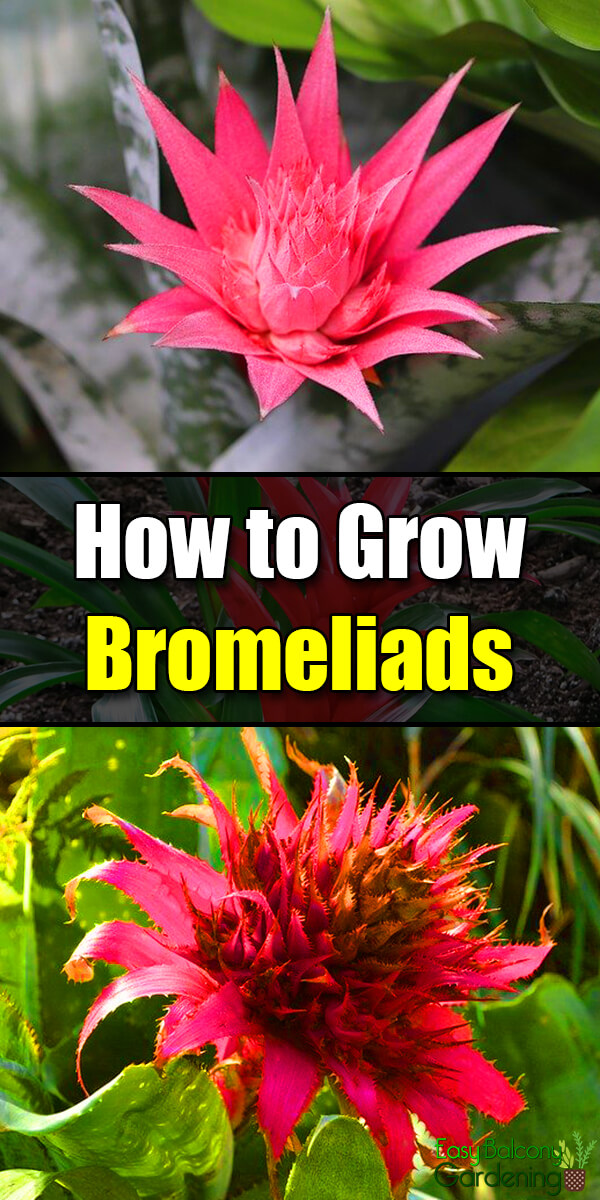While for some time bromeliads were thought to be houseplants for the advanced or even expert gardeners, this is not entirely true as they can be easily planted in regular home conditions and cultivated by anyone with a little experience. These flowers come in a variety of different textures and colors to let you choose the one that you’ll be most passionate about tending to. No matter what sort of bromeliads you are hoping to grow, this article will help you do so with ease.
Growing Bromeliads
Bromeliads are considered gorgeous foliage plants and will need a certain type of conditions in order to bloom. These conditions will vary depending on the type of genus you are planting, but there are certain rules you can follow to ensure they bloom at their best no matter what. For instance, you can get your plant to spike at will just by placing it in a clear plastic bag that is tightly closed around it with a ripe apple inside for up to 10 days at a time. The ethylene gas will feed the plant and help it grow.
Soil
Even though bromeliads are epiphytic, they can be grown in potting soil that is fast draining. To set it in the best possible soil conditions, mixing a blend of 1/3 sand and 2/3 peat-based soil mix will be good. These flowers can also be mounted onto logs and boards to grow. They will need to be watered consistently and frequently all throughout the year.
Light
Depending on the type, the plants will be tolerant to different levels of light. For instance, some plants will scorch in full tropical sun, while others will thrive. It is a good general rule to remember that bromeliad plants are great in well-let areas such as bright windowsills where they won’t be exposed to direct sunlight. You’ll know if the bromeliads are receiving too much light if they become yellow, while the plants that have elongated appearances or are a dark green color might not be getting enough light.
Water
These plants are tolerant of droughts which is helpful, but if you can, be sure that you keep the central cup of the plant full of water. If you choose to centrally water the plant this way, it’s important to flush out the central cup now and then in order to get any salts that have built up out of the plant. Otherwise, it’s more than enough to give water to these plants through the soil, especially during the growing season.
Humidity and Temperature
Fortunately, bromeliads are pretty tolerant of variations in temperatures, but the plants in hotter environments are going to need more humidity to be okay. Bromeliads will usually prefer temperatures that are as high as 80 degrees and as low as 55 degrees Fahrenheit. Do not let them go below 40 degrees.
By caring for the plants as outlined from start to finish, you’ll be able to enjoy the beauty of these plants for seasons to come.








